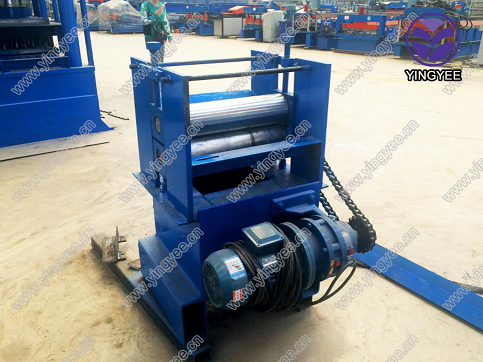
Understanding the Steel Coil Cut to Length Line
The steel industry is a cornerstone of modern construction and manufacturing, serving as the backbone for various sectors that rely on metal components. Among the processes involved in steel production, the cut to length line plays a crucial role, particularly when dealing with steel coils. This article explores what a steel coil cut to length line is, its operation, advantages, and applications.
What is a Steel Coil Cut to Length Line?
A steel coil cut to length line is a production system designed to process steel coils into flat sheets of predetermined lengths. It is a highly automated setup that includes several key components such as uncoilers, straighteners, shears, and stackers. The process begins with the uncoiling of a steel coil, which is then straightened and cut into specific dimensions according to customer specifications.
Components of the Cut to Length Line
1. Uncoiler This component allows for the unwinding of steel coils. It supports the weight of the coils and feeds the steel into the subsequent processing units.
2. Straightener Steel coils often come in a coiled form, which can lead to curvature and distortion. The straightening machine moves the metal through rollers that apply even pressure, ensuring a flat surface crucial for accurate cutting.
3. Shear The shear is responsible for cutting the steel into lengths. Using advanced technology, it can make precise cuts at high speeds, minimizing waste and maximizing efficiency.
5. Control System Modern cut to length lines are equipped with sophisticated control systems that allow operators to input specific measurements and adjust the process in real-time. This ensures flexibility and precision across various production runs.
The Cutting Process

The process begins with the coil being loaded onto the uncoiler, which feeds the material into the straightener. Once the steel reaches the straightening station, it is passed through rollers that flatten any kinks or curves. Following this, the steel moves to the shear, where high-speed cutting occurs. The shear systems can be programmed for multiple lengths and thicknesses, accommodating diverse customer needs.
Once cut, the steel sheets are directed to the stacker, which organizes them into stacks for easy distribution. The entire process is typically monitored and controlled through a centralized system, allowing for high efficiency and rapid response to production changes.
Advantages of Cut to Length Lines
1. Precision The automated processes ensure that the cut lengths are consistent and accurate. This precision reduces waste and minimizes the need for additional processing.
2. Efficiency With high-speed operations and automated handling, cut to length lines can process large volumes of steel coils quickly, saving time and labor costs.
3. Flexibility These lines can often be adjusted to handle varying steel thicknesses and lengths, making them suitable for a wide range of applications.
4. Quality Control Advanced monitoring systems can detect defects during the production process, allowing for real-time adjustments and consistent quality in the final product.
Applications of Cut to Length Steel
Cut to length steel sheets have numerous applications across various industries. They are commonly used in manufacturing automotive parts, appliances, metal furniture, and construction materials. Additionally, they are vital in producing components for electrical equipment, shipping containers, and machinery.
Conclusion
In summary, the steel coil cut to length line is an essential component of steel processing that facilitates the efficient conversion of coils into usable flat sheets. Its combination of advanced technology, precision, and adaptability makes it invaluable in modern manufacturing. As industries continue to demand high-quality steel products with varying specifications, the importance of cut to length lines will only continue to grow, supporting the overarching needs of construction, automotive, and manufacturing sectors. Through ongoing innovations, these systems will ensure that they meet the future demands of an ever-evolving industry landscape.